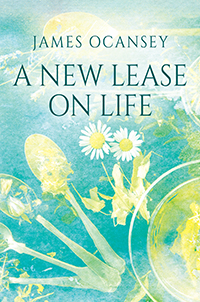All he wanted was another 1920s Hollywood Utopia!
OFFICIAL DESCRIPTION
The Winds of Malibu is the true story of a boy whose father (a computer engineer with a grudge against Hollywood) has held on to a house in the movie colony of Malibu, California, after a bitter divorce. At the age of eleven, Lucas is fiercely bitten by the Acting Bug and does anything to act. A war between him and his controlling father regarding his Hollywood aspirations ensues amid crippling anxiety attacks. The story of an outrageous upbringing, where friends are preferable to parents, and Lucas relies on his diary to guide him. Lucas’s peers at school will become Hollywood’s top actors in the coming decade. The ultra-quirky, stormy, funny account of an extraordinary boy’s struggle to hang onto his dream.
REVIEW
It is perhaps unavoidably funny that I must now, as a reviewer, attempt to explain The Winds of Malibu: An Unexplainable Memoir to you. However, this is precisely the kind of humor author Jeff Lucas would find amusing himself. After all, what is a memoir but a sustained attempt to translate personal experience into a form that others understand? The book’s subtitle leaves its first hints of dark and sideways humor, the kind of humor that may take you into the trash heaps of Malibu and shadowy memories of childhood fears but also sees the virtue of getting bit in the buttocks by a neighbor’s dog.
I must admit I didn’t grow up in Malibu during the 1970s. Still, Lucas does a great job summoning the place for me, especially its ragtag bands of roving, undersupervised, and extremely hormonal children who found their best entertainment came from shoplifting the candy aisle at Trances Market and one-upmanship in sowing their earliest wild oats. This is not the Malibu of today, or at least not entirely, with horseback riding the unwashed hills still a typical family outing. Upon returning to this Malibu after several years away, Lucas must figure out exactly who he wants to be.
“What kind of juvenile delinquent are you?”
“A different kind, I suppose.”
Meanwhile, the conflict with his father is built up from the barest hints of foreshadowing (“My dad never had a true, trusted friend in his life. I hiked along and swigged water out of a shared thermos and thought about that.”) until the tension in their relationship reaches a fever pitch (“It was beautiful not to see my father’s face.”). All the while, Lucas lays out his days at school in Malibu, growing up and performing on the school stage alongside Emilio Estévez and others. (Ironically, I had just watched Estévez’s movie The Public shortly before picking up this book. Sometimes, the universe lines things up like that.) Lucas manages to sketch the many joys, impossibilities, and trials of youth by including selections from his diaries and other ephemera. The alternation between these sections and more traditional prose forces the reader to slow down and engage with each moment as it takes place on the page.
Although I grew up worlds away from Jeff Lucas, The Winds of Malibu: An Unexplainable Memoir did a fantastic job of acquainting me with the time and place. There’s an artfulness to the simplicity of his sentences and to the dialogue that reflects, in many ways, how young people see the world: deceptively simple on the surface but roiling with emotion and nuance underneath. But far and away, the book’s most compelling part was the
through-line of Lucas’s struggles with anxiety. His world was full of constant change despite his story of repeatedly returning to his father’s house in Malibu, and his mental health struggles make perfect sense in that context—although not the kind of sense that makes anxiety any easier to live through. His struggles feel very real and also very much a part of the larger architecture of this memoir, which chronicles not just a time and place and the boy who grew up within it, but also the sense of something lost that can never quite be found.
A quick reader’s advisory note: This book does deal with a good amount of “adult content,” which makes sense given the time and place (1970s Malibu and Hollywood), so be aware of that.
IN SUMMARY
A deeply personal and yet humorous account of one boy’s coming of age in Malibu, The Winds of Malibu: An Unexplainable Memoir is rich with juicy tidbits about Hollywood’s new elite. The story gathers further interest as it explores the conflict between father and son as the author battles to join his schoolmates’ names on the big screen.
WHERE TO BUY?
Learn more about The Winds of Malibu: An Unexplainable Memoir on the book’s Outskirts Press author page.
I received a copy of this book in exchange for an honest review.








